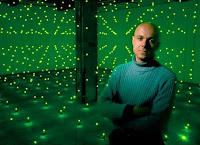 Today’s performers have never before been able to create such interactive, highly saturated and technologically advanced visual productions to match their music. Incandescent and halogen lights just aren’t capable of the same precision, programming and control, nor do they possess as much variety as LED fixtures do.
Today’s performers have never before been able to create such interactive, highly saturated and technologically advanced visual productions to match their music. Incandescent and halogen lights just aren’t capable of the same precision, programming and control, nor do they possess as much variety as LED fixtures do.Deadmau5, aka Joel Zimmerman, a well-praised electro-house producer, has incorporated RGB LED lights into his performances for several years. And if you’re going to a show in the hopes of liking the music (not just the lights), Deadmau5 is a pretty safe bet.
Adam Graham, Detroit News’ pop music writer, recently attended a Deadmau5 show at the Fillmore Auditorium. He writes, “His two-hour concert utilized a light show that could illuminate half of Michigan, with a massive backdrop of LED lights synced up with the lights on the façade of his DJ booth, which is shaped like a Rubik’s Cube on its end with the top cut off. Deadmau5 himself is at the center of the production underneath an oversize mouse helmet, outfitted with its own lighting capabilities and a giant, mischievous smile. And even though Deadmau5 is known for his large-scale productions, this tour handily tops his previous outings. No wonder that smile on his mouse head is so big.”





























